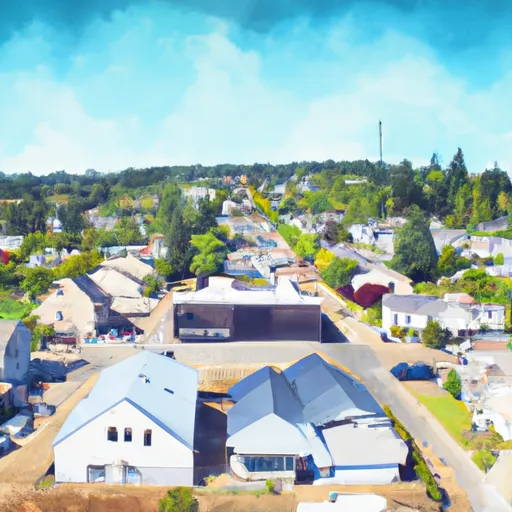-
 Snoflo Premium
Snoflo Premium
Get unlimited access to all our content
With no Ad interruptions! - Start Your Free Trial Login with existing account
Thorp
Eden Index
Climate
8.1
•
Recreation
1.2
•
Community
1.4
•
Safeguard
4.0/10

Thorp, Washington is a small town located in Kittitas County, nestled in the picturesque Kittitas Valley. The climate in Thorp is classified as semi-arid, characterized by hot, dry summers and cold, snowy winters. Summers are typically sunny and warm, with temperatures averaging in the mid-80s Fahrenheit. Winter temperatures can drop below freezing, and the town experiences moderate snowfall.
The hydrology constituents in Thorp are influenced by the Yakima River, which flows nearby. The river provides a vital water source for the town and supports diverse wildlife and vegetation. Additionally, Thorp is surrounded by stunning mountain ranges, including the Cascades and the Okanogan-Wenatchee National Forest, which contribute to the area's hydrological features and natural beauty.
Outdoor recreation opportunities in Thorp are abundant. The region is a haven for hiking, backpacking, and camping enthusiasts. The nearby mountains offer numerous trails, allowing visitors to explore stunning vistas, alpine meadows, and pristine lakes. Fishing is also popular in the Yakima River, known for its trout and salmon populations. Furthermore, Thorp is an ideal destination for wildlife watching, birding, and photography, with various species inhabiting the surrounding forests and habitats.
Overall, Thorp, Washington offers a desirable climate, diverse hydrology constituents, and ample outdoor recreation opportunities, making it an attractive destination for nature lovers and outdoor enthusiasts.
What is the Eden Index?
The Snoflo Eden Index serves as a comprehensive rating system for regions, evaluating their desirability through a holistic assessment of climate health, outdoor recreation opportunities, and natural disaster risk, acknowledging the profound impact of these factors on livability and well-being.
Climate Health Indicator (CHI): 8.1
Thorp receives approximately
417mm of rain per year,
with humidity levels near 72%
and air temperatures averaging around
8°C.
Thorp has a plant hardyness factor of
6, meaning
plants and agriculture in this region thrive during a short period during spring and early summer. Most
plants will die off during the colder winter months.
By considering the ideal temperature range, reliable water supplies, clean air, and stable seasonal rain or snowpacks, the Climate Health Indicator (CHI) underscores the significance of a healthy climate as the foundation for quality living.
A healthy climate is paramount for ensuring a high quality of life and livability in a region, fostering both physical well-being and environmental harmony. This can be characterized by ideal temperatures, reliable access to water supplies, clean air, and consistent seasonal rain or snowpacks.
Weather Forecast
Streamflow Conditions
Yakima
Area Rivers
Yakima
Snowpack Depths
Yakima
Reservoir Storage Capacity
Yakima
Groundwater Levels
Recreational Opportunity Index (ROI): 1.2
The Recreational Opportunity Index (ROI) recognizes the value of outdoor recreational options, such as parks, hiking trails, camping sites, and fishing spots, while acknowledging that climate plays a pivotal role in ensuring the comfort and consistency of these experiences.
Access to outdoor recreational opportunities, encompassing activities such as parks, hiking, camping, and fishing, is crucial for overall well-being, and the climate plays a pivotal role in enabling and enhancing these experiences, ensuring that individuals can engage in nature-based activities comfortably and consistently.
Camping Areas
| Campground | Campsites | Reservations | Toilets | Showers | Elevation |
|---|---|---|---|---|---|
| Taneum | 30 | 2,453 ft | |||
| Beverly | 10 | 3,116 ft | |||
| Swauk | 47 | 3,164 ft | |||
| Tronsen | None | 3,878 ft | |||
| Icewater Creek | 15 | 2,704 ft | |||
| Mineral Springs | 7 | 2,728 ft | |||
| Fiorito Ponds - WDFW | None | 1,435 ft |
Nearby Ski Areas
Catastrophe Safeguard Index (CSI):
The Catastrophe Safeguard Index (CSI) recognizes that natural disaster risk, encompassing floods, fires, hurricanes, and tornadoes, can drastically affect safety and the overall appeal of an area.
The level of natural disaster risk in a region significantly affects safety and the overall livability, with climate change amplifying these risks by potentially increasing the frequency and intensity of events like floods, fires, hurricanes, and tornadoes, thereby posing substantial challenges to community resilience and well-being.
Community Resilience Indicator (CRI): 1.4
The Community Resilience Indicator (CRI) recognizes that education, healthcare, and socioeconomics are crucial to the well-being of a region. The CRI acknowledges the profound impact of these elements on residents' overall quality of life. By evaluating educational resources, healthcare accessibility, and economic inclusivity, the index captures the essential aspects that contribute to a thriving community, fostering resident satisfaction, equity, and social cohesion.

